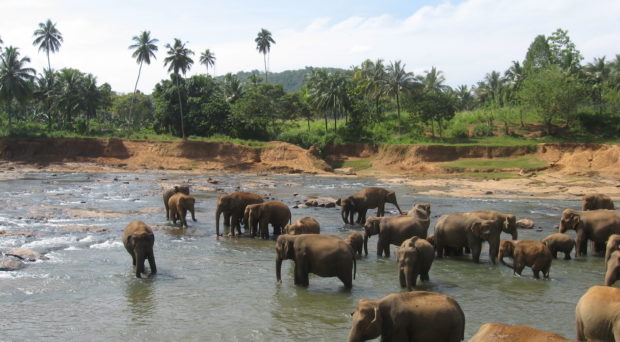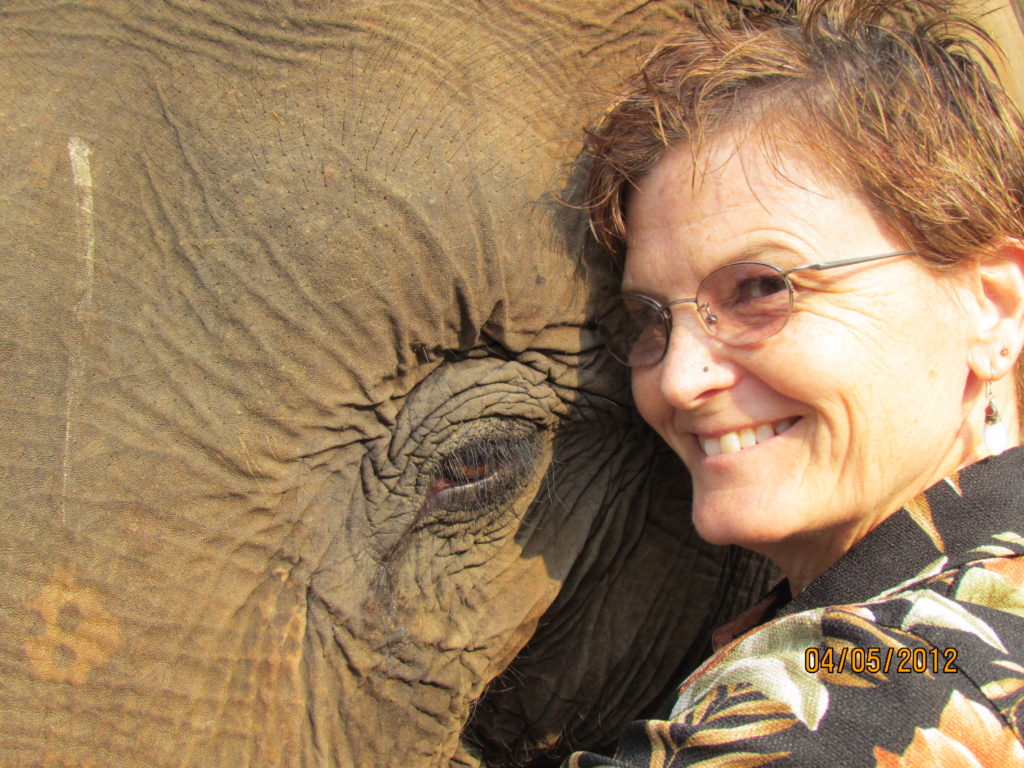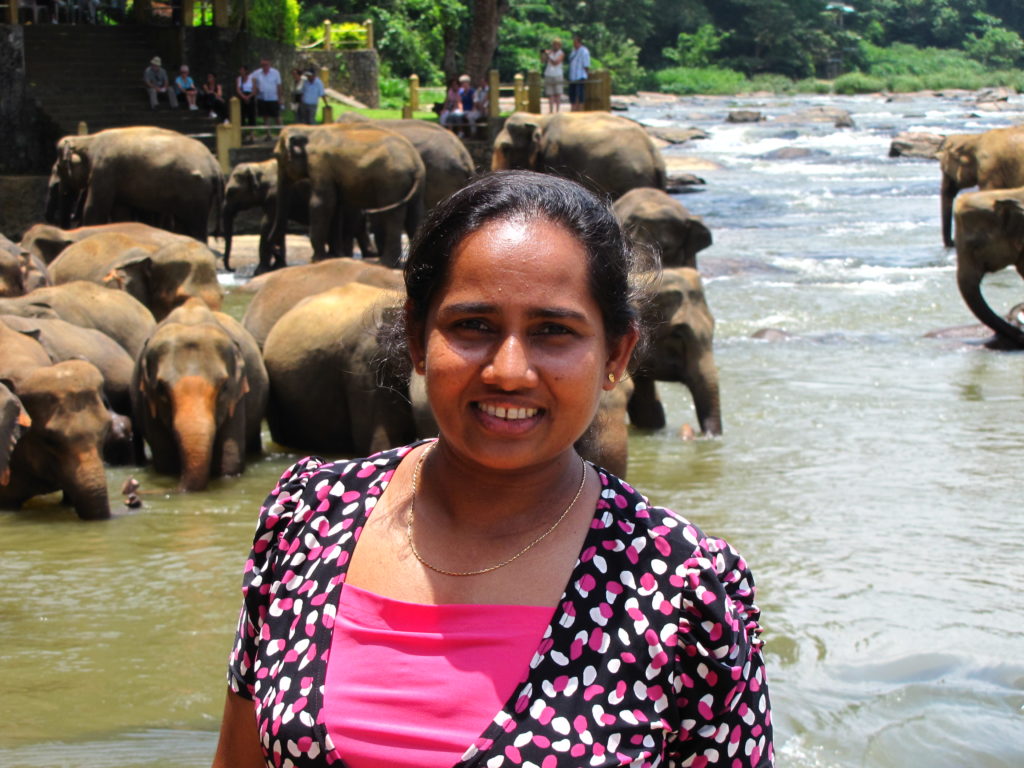
Our paper, published in BMC Zoology, is a labor of love, and for me came 30 years after I accidentally stumbled into the world of elephants. I was a postdoctoral fellow in 1987 at the Uniformed Services University in Bethesda, MD studying testicular function in rat and sheep models when I got a call from the elephant curator at the National Zoo, who asked if I could measure hormones in elephants. He had a young female (a 13 year old named Shanthi) they wanted to breed, but didn’t know if she had reached puberty. Having dreamed of a possible career with wildlife, I jumped at the chance and said ‘YES’ immediately.
Little did I know that there was almost nothing known about the biology of elephants, including puberty, so I started from scratch to find a way to assess ovarian cycle function. Estrogens weren’t very informative, so I focused on progesterone to characterize luteal activity and found a sensitive immunoassay that produced good results. Turns out Shanthi was cycling and she was sent out for breeding. I monitored hormones during her pregnancy and postpartum lactation, and then got interested in the other elephants at the zoo. I published a few papers and before I knew it, I was being inundated by requests from other zoos to monitor hormones in their elephants too.
Little did I know this was going to be the start of a whole new career, and that I would become obsessed with a love for elephants. In 1991, I was hired by the zoo and quickly established the first wildlife endocrine service lab, which focused on elephants initially, but today has produced data on over 250 species (https://nationalzoo.si.edu/center-for-species-survival/wildlife-endocrinology).
Little did I know that there was almost nothing known about the biology of elephants
As with so many things in life, the more you learn, the more interested you become. This certainly happened to me with elephants. I soon learned how important elephants are in the natural world. They are keystone species because of how they modify habitat, converting forests to grassland, creating water holes in times of drought, and spreading the seeds of plants. They also are umbrella species, as the conservation of elephants preserves not only habitat, but other species therein.
As a zoo biologist, I became acutely aware of how important elephants are as a flagship species, raising awareness for action and funding of broader conservation efforts. Asian elephants are endangered, with only 35,000 – 50,000 remaining in the wild, and populations are being decimated by habitat destruction and poaching. There are almost no wild elephants left in several range countries, like Bangladesh, Bhutan, Cambodia, China, Nepal and Vietnam (<500 each). For this reason, captive breeding is increasingly viewed as an important means of maintaining insurance populations in case of environmental or anthropromorphic catastrophe.
The problem is that not many captive populations are self-sustaining, here or abroad, and supplementation by wild capture has been widespread, putting further pressures on already fragile wild populations. So, at least in the U.S., I felt I could help by at least making sure we could identify all reproductively viable females (via blood hormone monitoring) for breeding. Teased by the zoo community for a while as being part vampire because of my insistence that all elephants be bled weekly to assess ovarian cyclicity, today it is standard practice.

There are about 16,000 captive elephants in Asia, where they are used in tourism, religious activities and logging. In the mid 2000’s, I began working in Asia, where they face similar problems with elephant population management. I first visited The Pinnawala Elephant Orphanage (PEO) in Sri Lanka in 2003, and have returned every few years after that. The PEO has one of the few sustainable populations in Southeast Asia. It began as an orphanage in 1975 with five baby elephants, and today has over 80, including 45 that were born there and span three generations. It is an amazing place, with elephants managed in semi-captive conditions. They do not have individual mahouts (keepers), which is common in most Asian tourist facilities. However, this means they are a bit wild, and certainly not used to being handled or blood sampled.
[I was] teased by the zoo community for a while as being part vampire
It was in 2007 that I met Dr. Samanthi Mendis, who was the vet at the PEO. It was clear she loved the elephants as if they were family; she knew each one by name, who liked whom, and who were the best mothers and aunties (allomothers). Elephants are a highly social species, and form close social bonds with each other. Samanthi said she was interested in doing a Master’s project and asked if would I be willing to mentor her with a Senior Academic (our co-author, Niromi Jayasekera) at the Perideniya University in Kandy. She wanted to know when the young elephants at PEO started to cycle, and because there were no papers published on the endocrinology of puberty in elephants, I knew this was would be a unique opportunity to amass new information on an understudied species.

She picked out 11 females less than 15 years of age for her study and set about training them to obtain measures of body weight, height and length, and blood samples from the ear veins. In a region where positive reinforcement training was rarely, if ever, used, she recognized the need to treat the elephants humanely and found they readily performed desired behaviors in exchange for favored treats, such as bananas and sugar cane.
When all of the samples were collected, I brought my Mobile Endocrine Laboratory to Sri Lanka to analyze them (it was not possible to export the samples because of USDA concerns over diseases, like foot and mouth). At the same time, Samanthi received training in endocrine techniques as part of our commitment to building capacity in range countries.
The results of this study showed that these elephant females initiated ovarian cyclicity earlier than expected, compared to observational data on wild elephants. We just assumed elephants reached puberty around 12 years of age, but this study found many were cycling as young as 4.5 years. We believe this may be related to higher levels of nutrition in captivity compared to diets in the wild, and may be analogous to early puberty associated with increased body fat in modern girls.
Knowing when an elephant reaches puberty is important for preventing unwanted pregnancies in very young females, and can help guide breeding management decisions to maximize overall reproductive success. It has resulted in many zoos starting to collect blood samples from elephants at younger ages (starting at 5 instead of 8 years of age), and making sure young females are not left with bulls unsupervised.
What makes me so proud is that this study has not only resulted in important, new information, but that it fulfilled the dream of a young veterinarian to learn more about the elephants she cared so much about, and contributed to the scientific literature in a way that has changed how elephants are managed today. Our mission at the National Zoo and Smithsonian Conservation Biology Institute is to save wildlife species from extinction and train future generations of conservationists. This study certainly met that mandate.
The authors are grateful for partial funding support from the National Science Foundation of Sri Lanka and the Shared Earth Foundation.
Comments